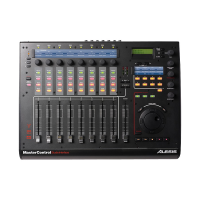• Fast – Fast filter changes, good for bass sounds.
• Slow – Slow filter changes, better for long sweep sounds.
• Medium – Medium percussive, for slower bass sounds.
In general, you want “ fast” VCO changes, and either “ fast” or “ medium” filter changes
(depending on whether you are doing techno bass or more of a funky bass feeling). This is
not a hard and fast rule; not every sound benefits from this.
11.8 gain possible clarity by running the filters in series:
This tip comes from Colin. Colin noted that the waveforms “ squish” up a bit, perhaps due to
the nature of the VLSI design. However, there is a possible workaround:
Both filters seem to lose bottom end compare to the bypassed waveforms but you can rectify this by
running em in series. Then they compare well to the bypassed sound. This is how I use the A6 for
all my bass sounds
I have no idea why running em series would make the filters sound better.
11.9 colin’s notes on the shapes and sound:
(note for designing bass patches)
I've ben using Log3 for most of my patches, but there always seemed to a softness about the attack.
After experimenting a bit, a find the EXP3 to be much more percussive sounding but it also makes
the patch sound "smaller", and you get a bit of air before the sound fully kicks in. Scurve1 gives the
best of both worlds. It has some of the size/thickness effect of Log3 but with the snap of Exp3, but
with less air :)

